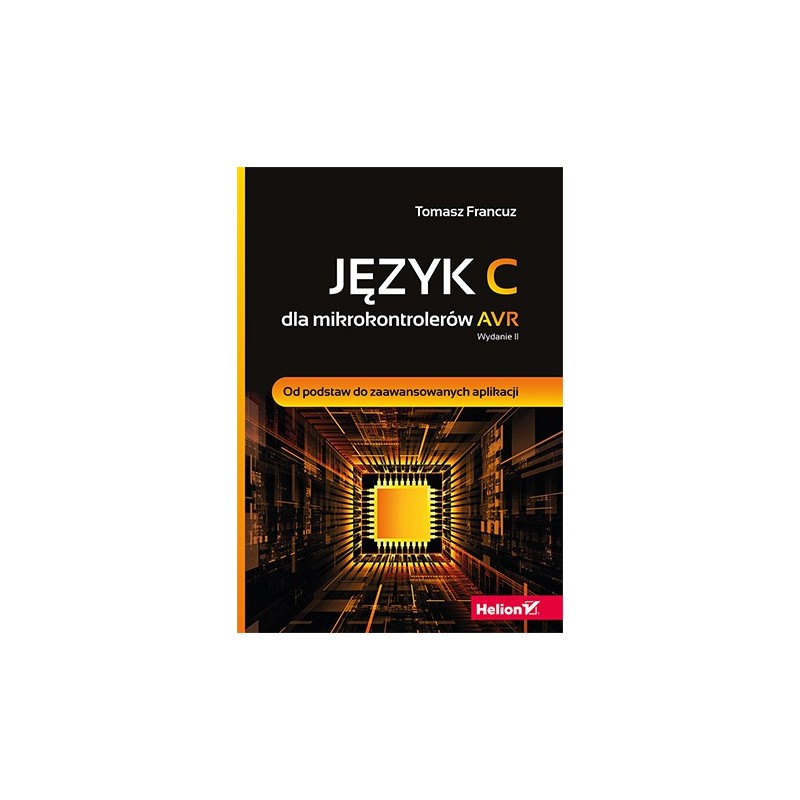- Out-of-Stock



Tomasz Frenchman
ISBN: 978-83-246-9814-1
Release date: 2015-01-09
Number of pages: 712
Format: 158x235 mm
Microcontroller under control!
AVR microcontrollers are a group of systems offering great possibilities. Every amateur electronics and programming knows that you can use them in a thousand ways, and the simplicity of construction, speed of operation, the richness of the periphery and many free tools make them all the more attractive gadgets. If you would like to explore the secrets of programming microcontrollers or to improve your own skills in this field, it's time to look into this book!
The new edition includes changes that have taken place in the world of AVR in the last 3 years, i.e. the change of AVR Studio to Atmel Studio. You will find the basics of using the new IDE, creating and debugging projects in it. You will learn more about the changes in the avr-gcc compiler, especially the so-called named address spaces, which facilitated access to data stored in the FLASH memory of the microcontroller. You will discover how to use TV remote controls to control a written program and how to combine a C program with an assembler. LED enthusiasts will understand how to handle multi-colored matrices using the peripherals available in AVR, and how to hardware exchange data with popular LEDs with the WS2812B driver. If you want the microcontroller to become your ally, you must read this book!
A microcontroller of great possibilities for your services!
Table of Contents
Introduction to the second edition (13)
Introduction (15)
Chapter 1. How to start, or installing the environment (19)
Chapter 2. Microcontroller and its surroundings (33)
Chapter 3. Programmers (53)
Chapter 4. What we're working on, or ATmega168 / 328 Xplained Mini at a glance (77)
Chapter 5. Configuration bits (85)
Chapter 6. Arithmetic and bit operations (95)
Chapter 7. Basics of C language on AVR (123)
Chapter 8. Project management and preprocessor (155)
Chapter 9. Program sections (183)
Chapter 10. Core control and energy consumption management (193)
Chapter 11. Dynamic memory allocation (207)
Chapter 12. Built-in EEPROM memory (223)
Chapter 13. Accessing FLASH memory (245)
Chapter 14. Access to 16-bit IO registers (255)
Chapter 15. We release, or when delays are necessary (259)
Chapter 16. Data files - how to add them to the project? (267)
Chapter 17. Access to microcontroller's IO ports (277)
Chapter 18. General purpose registers (303)
Chapter 19. Breaks (307)
Chapter 20. Timers (343)
Chapter 21. RTC - or a little about clocks (365)
Chapter 22. Comparator (379)
Chapter 23. Analog-to-digital converter (383)
Chapter 24. Operating alphanumeric LCD displays (407)
Chapter 25. Monochrome graphic displays (439)
Chapter 26. USART interface (477)
Chapter 27. SPI interface (511)
Chapter 28. TWI interface (531)
Chapter 29. USI interface (563)
Chapter 30. 1-wire interface (569)
Chapter 31. A lot of LEDs, a lot of fun (587)
Chapter 32. TV remote controls (601)
Chapter 33. Combining C and Assembler Code (617)
Chapter 34. Bootloader (639)
Chapter 35. Debugging the program (661)
Index (695)
No product available!
Set with SIMCom 5G SIM8202G-M2 module designed to work with the Raspberry Pi minicomputer. It supports 5G SA or NSA networks and is backward compatible with 4G and 3G networks. Waveshare SIM8202G-M2 5G HAT (B) (with case)
No product available!
No product available!
LED 3 mm Yellow Diffused, LC 2mA, 60 degree angle; light intensity 100 mcd (2mA) (1.9V); df 589nm
No product available!
Spring dedicated to the heating table of 3D printers. It allows you to adjust the degree of tightening the knob, and thus enables the proper leveling of the working table
No product available!
No product available!
No product available!
No product available!
No product available!
Prototyping module with ATxmega128A3U-AU processor, Leon Instruments, RoHS
No product available!
Discovery kit for STM8A Automotive series - with STM8AF5288 and STM8AL3L68 MCUs, STM, RoHS
No product available!
Banana Pi R2 is a mini-computer (router) equipped with a Quad-core ARM Cortex-A7 quad-core MediaTek MT7623N processor, 2 GB of RAM, WiFi module, Bluetooth 4.1 and connectors: HDMI, 5 x Ethernet, 2x USB 3.0. The set has a 40-pin GPIO connector, on which you can find UART, SPI, I2C and ID EEPROM interfaces.
No product available!
No product available!
No product available!
No product available!
No product available!

Tomasz Frenchman
